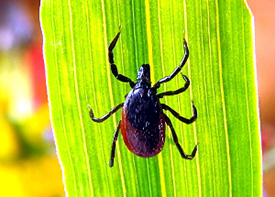
Scientific American recently ran an article entitled “The Other Orchid Thief: Virus Ravages the Popular Flower”. It starts with the story of orchid hobbyist Colette Theriault, who bought her first Phalaenopsis orchid) in 1999. Her collection grew to 25 orchids crowding her windowsills, but in March she discovered yellow spots on the leaves of her collection—discolored leaves are telltale sign of a virus. Theriault is now fighting a losing battle to save the first orchid she ever bought. "It's psychological for me," she says. "I was mad at myself for buying more plants."
There are 30 known orchid diseases, but when growers say a plant has "a virus" they usually mean one of the two most prevalent: Cymbidium mosaic virus (CMV) or Odontoglossum ringspot virus (ORSV). Neither causes any obvious signs, but once orchids contract them, the plants begin to limp along—with fewer, shorter-lasting flowers. Then brown spots begin to appear on the leaves, the petals mottle and wilt, and the plant ultimately succumbs.
The American Orchid Society says, “It is important to remember that there is no cure for an orchid infected with ORSV or CyMV… Infected plants should be discarded and the suspicious ones should be isolated to prevent further dissemination of the viruses. The best way to control orchid viruses is by prevention…one should always buy orchids from certified producers and avoid bringing plants with symptoms home.”
Currently, at least two groups of orchid scientists, one in Hawaii and another in Singapore, have begun trying to solve the problem by genetically engineering breeds that resist CMV and ORSV. Sek Man Wong, a plant pathologist at the National University of Singapore, hopes to have a genetically modified orchid ready for the market by 2015

Copyright Just Add Ice® Orchids 2023